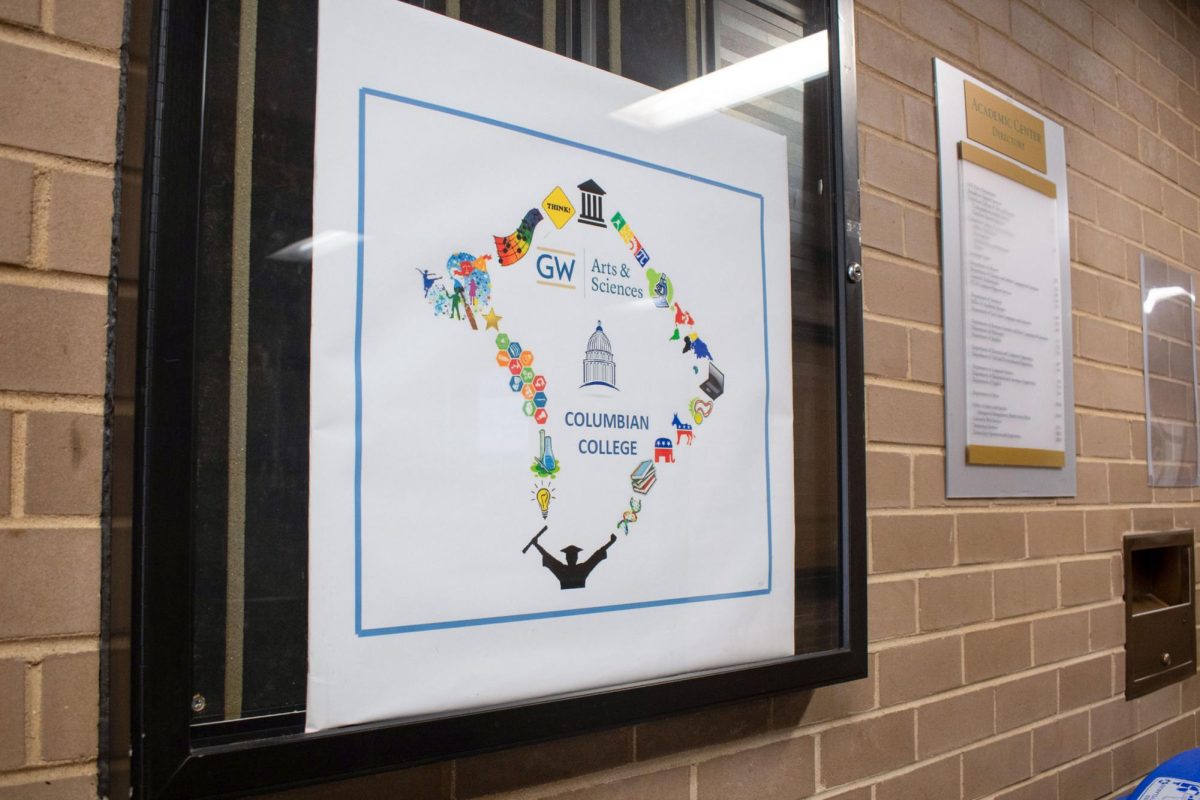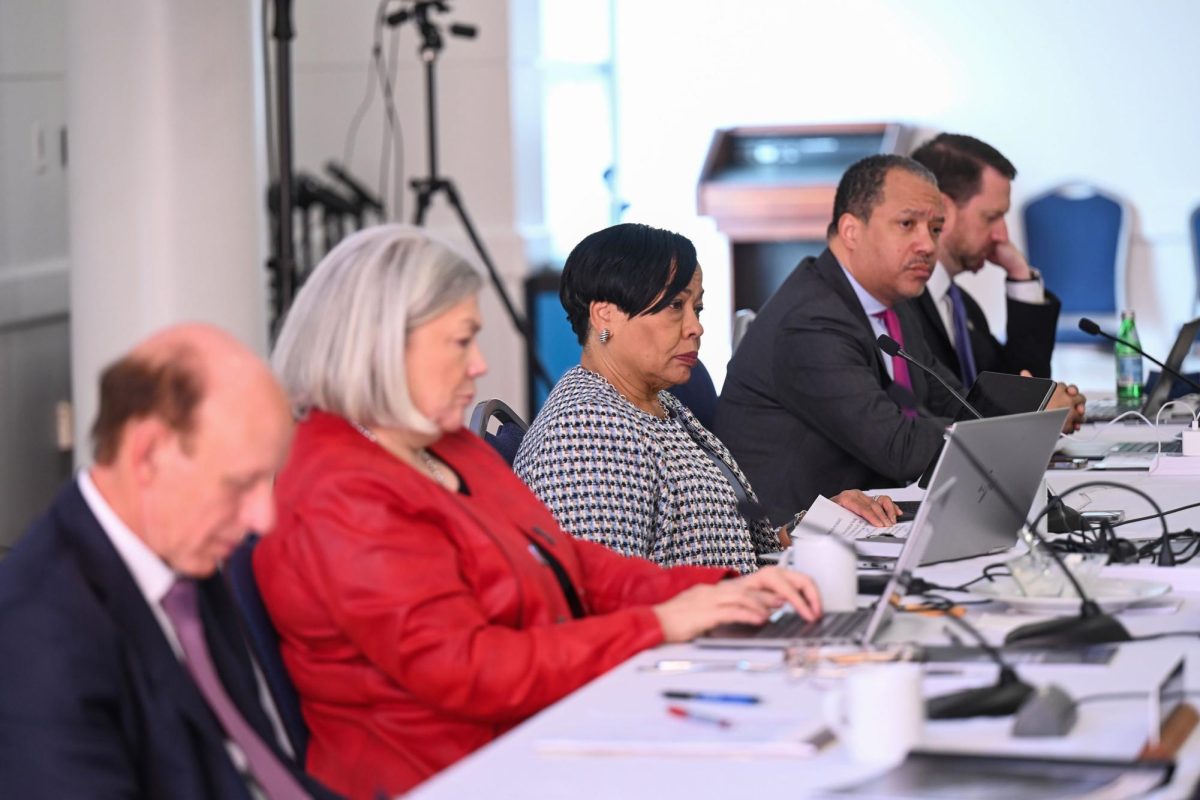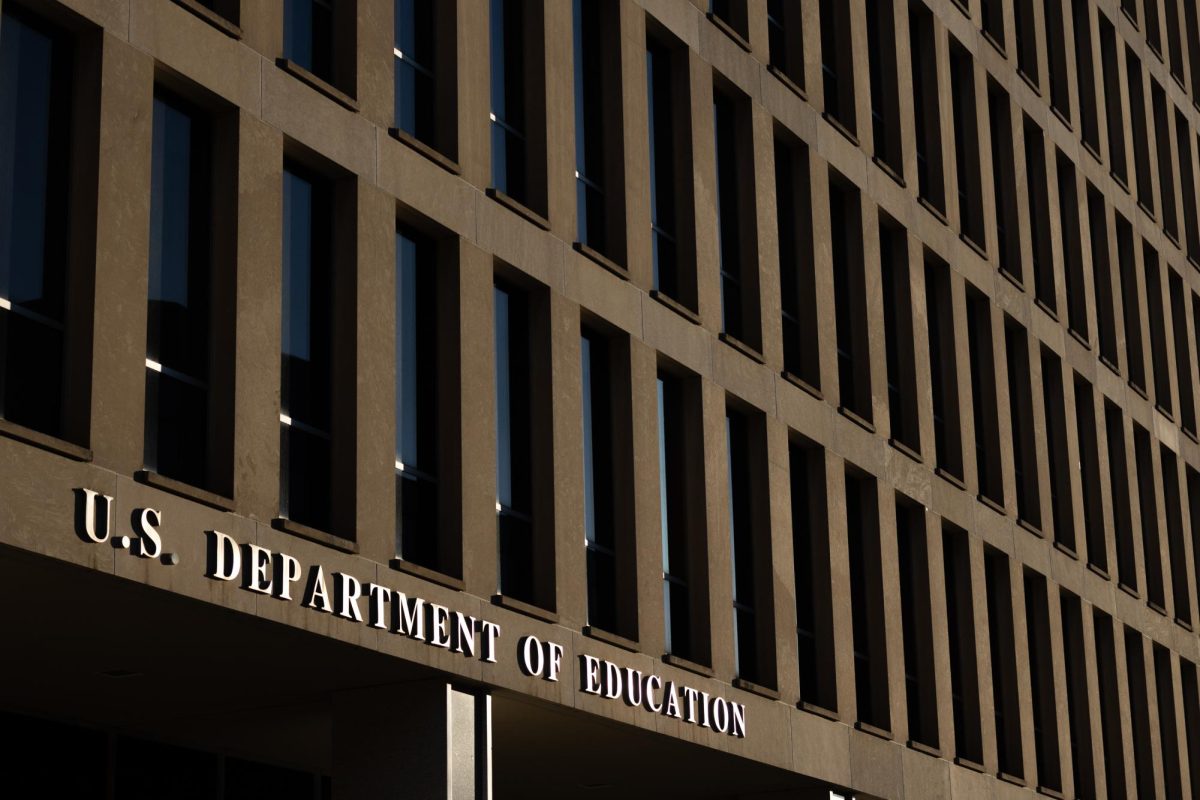The Faculty Senate passed a resolution Friday calling on officials to increase faculty influence over a plan that will guide future University construction projects in Foggy Bottom.
By a vote of 20 to 4, faculty senators urged administrators to allow the senate to vet and modify the Strategic Campus and Facilities Master Plan, a guideline for five potential future projects in Foggy Bottom, including a new ambulatory care center, a new student center and a “reimagined” Kogan Plaza. Senators also passed a resolution of appreciation for outgoing University President Thomas LeBlanc by acclamation, but he was not present to receive the honor.
Sylvia Marotta-Walters, the chair of the senate’s physical facilities committee, said the resolution aims to supplement the master plan, which is still in its initial planning phase. She said senators want to be more involved in the decision-making process as officials move from concepts to actual designs, in line with recent advances toward shared governance between faculty, administrators and the Board of Trustees.
“We want to expand so that all faculty in all schools of the University are engaged in the process of making recommendations as part of the three-legged pillar of shared governance, so we see this very much as being within our purview,” she said while introducing the resolution during the meeting.
The resolution also aims to clarify plans for buildings like Madison and Tompkins halls, which the projects outlined in the master plan would remove from campus. The plan outlines concepts to replace Tompkins Hall with an ambulatory care center, and Marotta-Walters said the senate expects administrators to clarify their plans for the site.
“We want to have the administration address the loss of Tompkins Hall, which right now is significantly used by several schools at the University, not only for classroom space, but also for research needs,” she said.
The resolution urges officials to work with the D.C. government to extend the city’s deadline for GW’s developmental rights, currently set to expire in 2027, in accordance with the 2007 Foggy Bottom Campus Plan. The plan stipulates that the University must build or receive approval to construct at least 70 percent of its 3.5 million square feet of real estate by 2027 to retain the rights to continue development projects on the entire plot of space.
University President Thomas LeBlanc said during a Faculty Senate last month that officials will likely need to approve the designs by the end of 2022 if they wish to implement them before the developmental rights expire.
The resolution also calls on officials to expand the master plan to include other aspects of the University’s future, like student enrollment numbers and diversity efforts. Marotta-Walters said the University should also incorporate financial aid commitments to underserved communities in the plan, alongside diversity and student enrollment plans.
“We want to make sure that in those discussions of what’s going to be built when and where and how that there’ll be discussions that emphasize the key priorities of the size of the student body,” she said. “That has obvious implications for residence halls.”
Senators also presented a report on the University’s finances at the meeting, which showed that officials forecast GW’s bicentennial celebrations to cost GW $2.8 million after budgeting only $1.3 million for the events.
Eric Grynaviski, the chair of the technology subcommittee of the educational policy and technology committee, delivered a report stating that the volume of support requests have overwhelmed GW Information Technology staff under the current shared services model that officials established during the pandemic last year.
“The subcommittee believes that no organizational model would be sufficient with current staffing levels,” he said. “We simply don’t have enough people answering the phone, and it doesn’t quite matter how you organize them.”
GWIT support requests more than doubled during the first week of classes this semester compared to spring 2021. Faculty said the IT department is understaffed and was not adequately equipped to handle the influx of support requests at the start of the semester.
Officials consolidated GW’s technology departments into a centralized, shared services model last summer to reduce costs and mitigate the financial impact of the pandemic. Officials laid off dozens of technology staff and asked them to reapply for a smaller number of positions under the new structure.
Researchers in the geography department said they were unable to access troves of data for more than a month as officials transitioned the Columbian College of Arts and Sciences’ online file storage system to an updated platform.
Senators at the meeting also unanimously approved four faculty nominations to the appointments, salary and promotion policies committee and the education policy and technology committee.
Interim Provost Chris Bracey included in his prepared remarks that he is resuming meetings to review academic activities at various schools and units at GW during Fiscal Year 2022, where he will assess whether there are any budgetary issues he can help resolve.
He said officials are also beginning work on an academic plan running from fiscal years 2023 to 2027. Bracey said they have met with leaders of all schools and colleges and plan to meet with administrative units in the provost’s office just before Thanksgiving.
“I look forward to having productive conversations with them as I have with the schools and colleges as we begin to chart a course for the future,” he said.
Former Provost Brian Blake suspended the development of his academic master plan last November after receiving criticism from faculty over a lack of their inclusion in the plan’s development.
Bracey added that officials are relaunching the “GW Academic Leadership Academy” to hold seminars for various schools and academic units at the University on topics like conflict management and academic program planning.
“The Academic Leadership Academy was the brainchild of Forrest Maltzman and myself several years ago,” he said. “It facilitates cross-institutional networking among academic leaders and was designed to build leadership capacity for the participating schools and units.”
Erika Filter contributed reporting.










